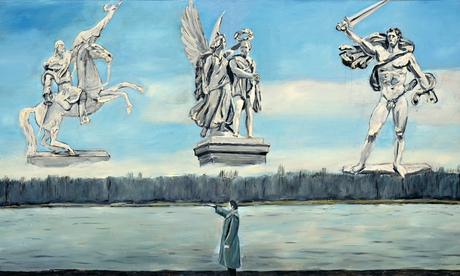A VILLAGE has become home to a host of characters thanks to crafty residents.
More than 30 weird and wonderful scarecrows have been created in Easington Village as part of a competition.
An astronaut, teddy bears picnic, Britannia and a giant wooden robot have all been put on display by people hoping to win a prize.
Organiser Alice Morton arranged the colourful competition for the second year, and said she is pleased with the response.
“I wanted to organise it because I thought if I don’t do it, then no one will,” she said.
“It is a way to get the whole community together and getting crafty.
“We’ve got a Humpty Dumpty, Little Miss Muffet, a builder and a genie, to name a few.”
Alice, 18, who is due to start a degree at Leeds Metropolitan University next week, has also organised a scarecrow awards fair, which will take place tomorrow.
Everyone who has entered the scarecrow competition will win a prize, and those who attend will get a chance to see pictures of the entries.
A judging panel will decide who wins which prizes, and there will also be entertainment for all the family, including a bouncy castle-READ MORE-.http://www.sunderlandecho.com/news/local/all-news/weird-and-wonderful-scarecrows-on-show-1-6851310
 This model for some unknown reason decided to have a 12,000 third boob,not photo shopped
This model for some unknown reason decided to have a 12,000 third boob,not photo shopped Air traffic controllers have been left baffled by a plane which left a bent contrail in the sky, suggesting it suddenly changed its path mid-air.
Air traffic controllers have been left baffled by a plane which left a bent contrail in the sky, suggesting it suddenly changed its path mid-air.

 Is it a mushroom? Is it a jellyfish? No, it's a new animal so bizarre in appearance that it has defied attempts to place it anywhere in the vast animal kingdom.
Is it a mushroom? Is it a jellyfish? No, it's a new animal so bizarre in appearance that it has defied attempts to place it anywhere in the vast animal kingdom. An X-ray of the Great Dane's stomach
DoveLewis will put the $500 (£306) prize money towards funding emergency
care for pets of low-income animal owners, Ms Harch said.
An X-ray of the Great Dane's stomach
DoveLewis will put the $500 (£306) prize money towards funding emergency
care for pets of low-income animal owners, Ms Harch said.